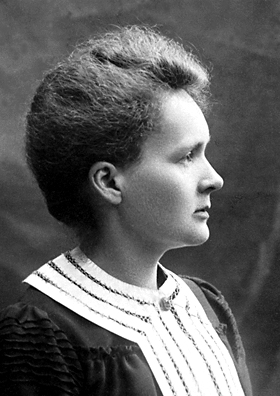Marie Curie
The woman who unlocked radioactivity

Marie Curie (born Maria Skłodowska) pioneered research into radioactivity, discovered the elements polonium and radium, and carried that work into medical uses (including mobile X-ray units in WWI).
Here's a time line of Marie Curie’s life:
- 1867— Born Maria Salomea Skłodowska in Warsaw (then part of the Russian Empire).
- 1891— Moves to Paris to study at the Sorbonne (begins higher education in physics and mathematics).
- 1898— Announces the discoveries of two new radioactive elements: polonium (named for her native Poland) and radium.
- 1903— Awarded the Nobel Prize in Physics (shared with Pierre Curie and Henri Becquerel) for their work on radiation phenomena. She is the first woman to win a Nobel Prize
- 1914–1918— During World War I she spearheads the creation of mobile radiography (X-ray) units — the “Petites Curies” — and trained teams to operate them at field hospitals.
- 1920— Plays a leading role in establishing research institutions devoted to radiology and medical applications of radioactivity (the Curie Institute in Paris develops into a major research center).
- 1934— Dies on July 4, 1934, in Passy, France, of aplastic anemia, a condition linked to prolonged exposure to ionizing radiation
“Nothing in life is to be feared, it is only to be understood. Now is the time to understand more, so that we may fear less.” — Marie Curie.
Learn more about Marie Curie